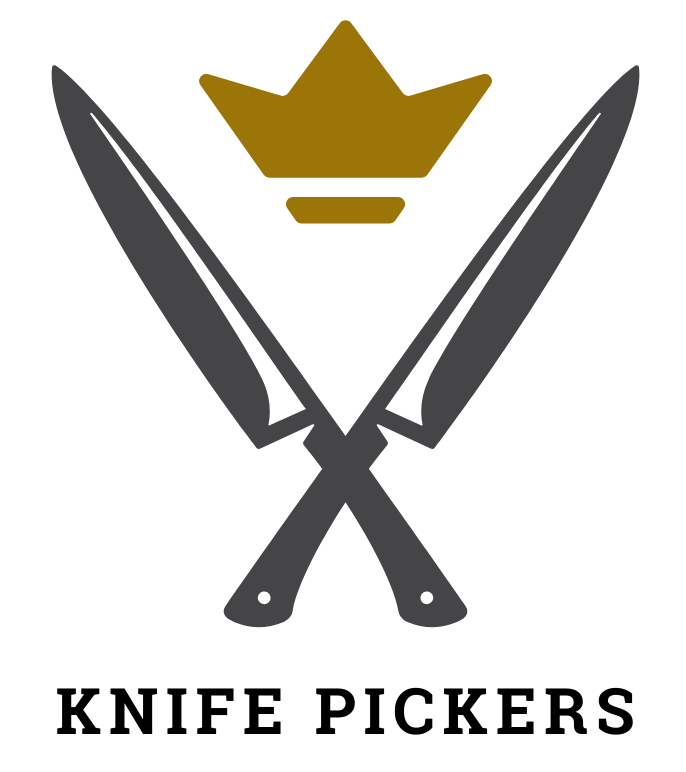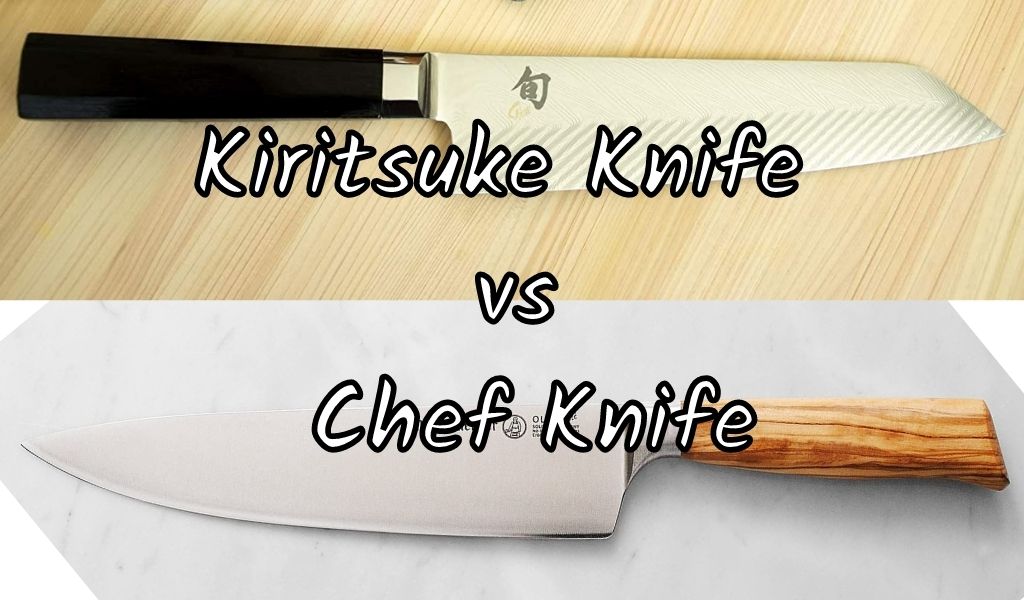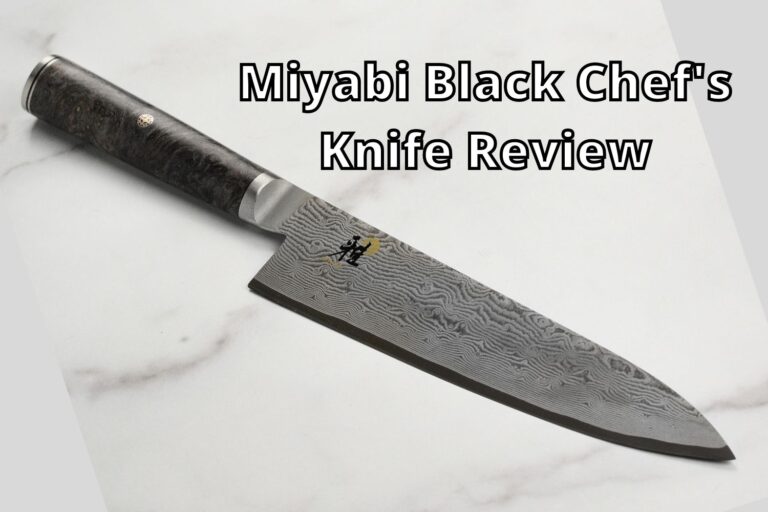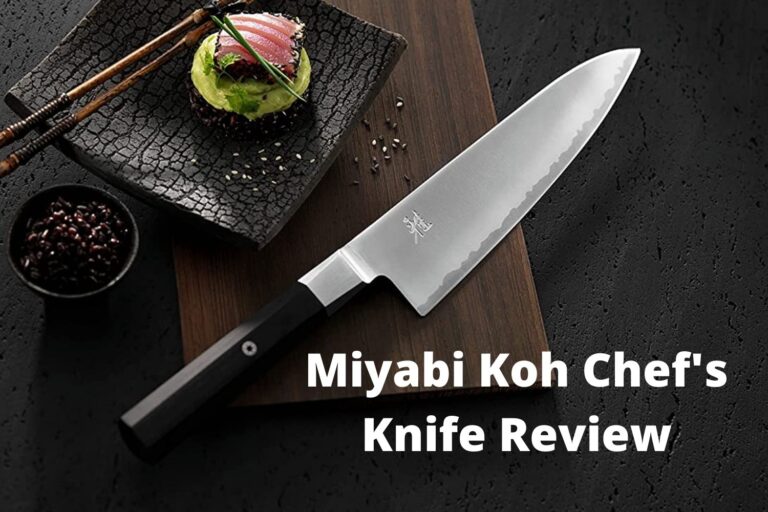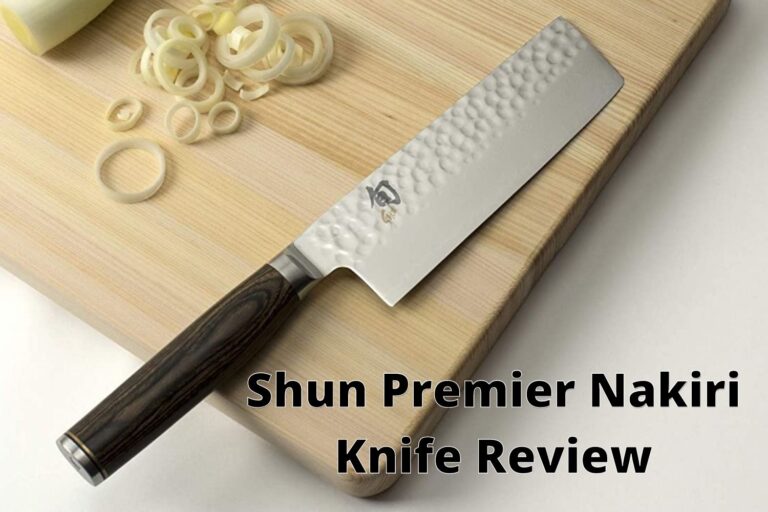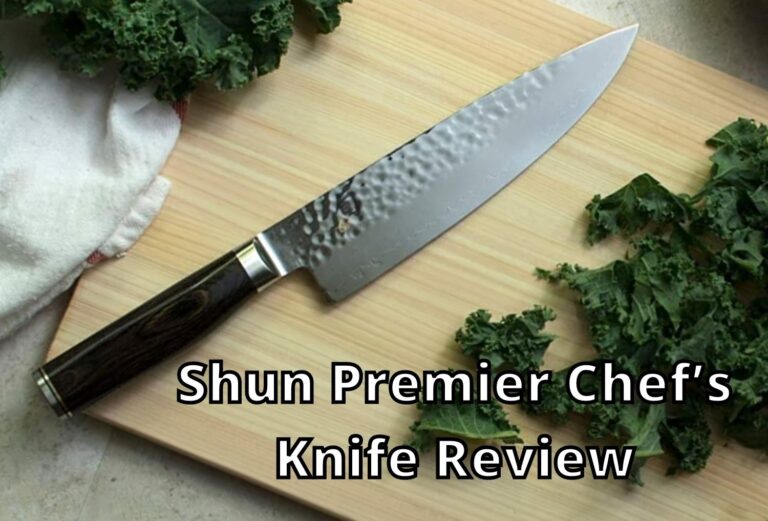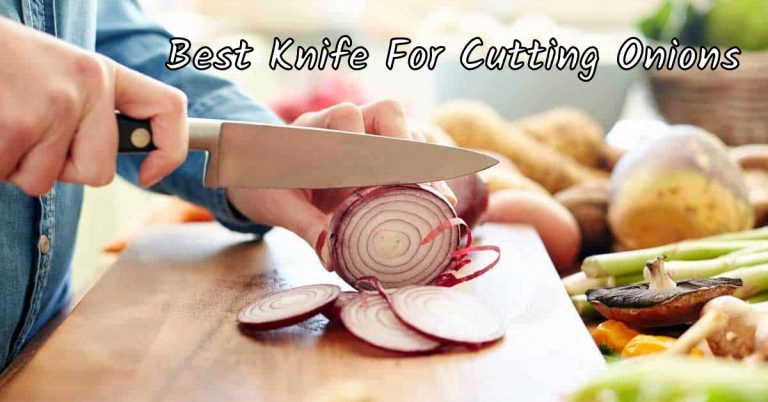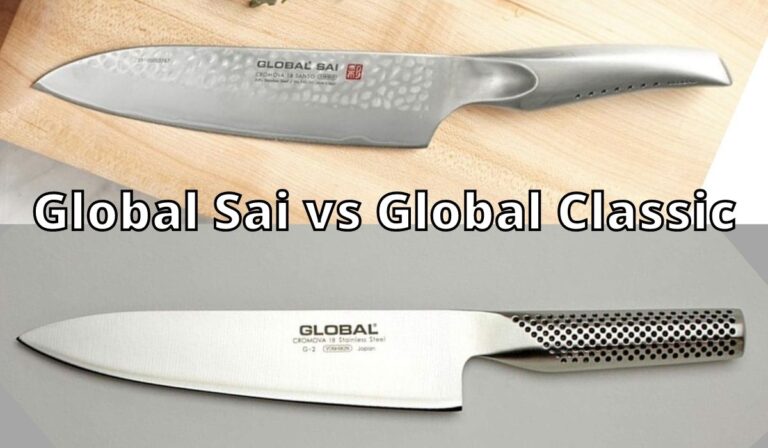The two most common knives used in the kitchen is Kiritsuke and chef knife. If you’re a beginner cook or are looking to buy your first Japanese knife, choosing between Kiritsuke and chef knives can be confusing. If you don’t know how to differentiate them, they might seem the same. But They have completely different usage as well as the difference in designs, sizes, shapes, and materials.
Let’s go through this Kiritsuke knife vs chef knife comparison to know more about the differences and similarities of these two types of knives.
Comparison Table: Kiritsuke knife vs chef knife
If you are in hurry then before going through this whole Chef knife vs kiritsuke knife review,you can go through this quick comparison table.
| Kiritsuke Knife | Chef Knife | |
| Origin | Japan | Mainly western country |
| Use | Multifunction (Cutting, chopping, slicing) | Multifunction ( Slicing, Cutting) |
| Blade Curve | Flatter Profile | Both flat or curved |
| Blade pattern | Lightweight and angled tip | Heavyweight and pointy tip |
| handle | Japanese style (Octagonal, D shaped) | Western style ( Ergonomic) |
What is a kiritsuke Knife?
Kiritsuke knife is a type of Japanese chef knife. Kiritsuke is one of the most popular Japanese chef knives. It is used to chop vegetables and meat, which are called “katsuramuki” or “katsuretsu” in Japanese.
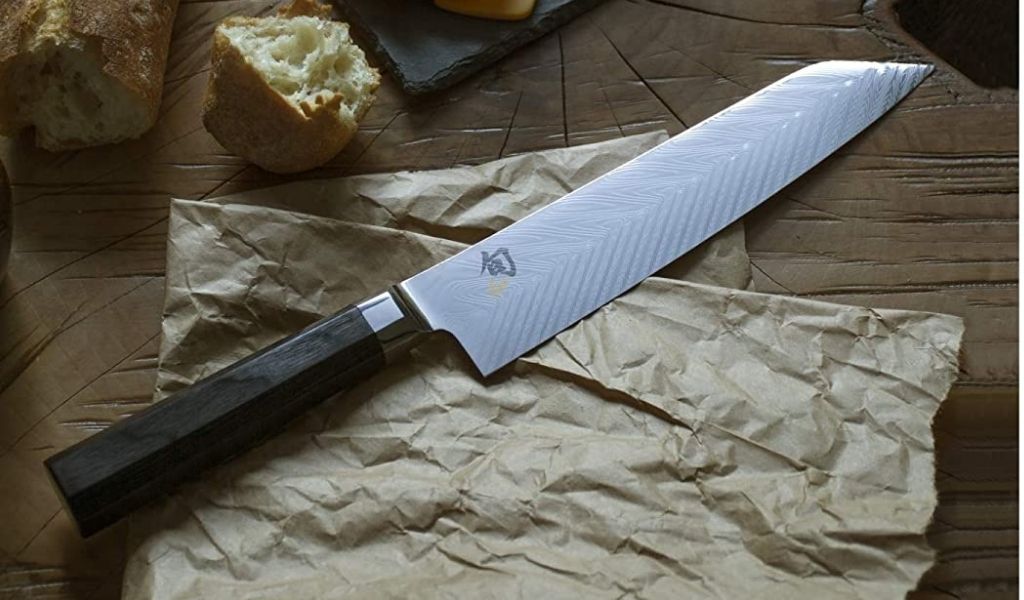
Generally, the Kiritsuke knife has only one edge on both sides of the blade. The blade length is generally longer than 165mm.And the curvature of a Kiritsuke knife is often higher than that of a santoku knife, and its main purpose is to cut through food.
Another explanation is that, Kiritsuke is the Japanese term for a kitchen knife that is used when preparing sashimi (raw fish) and other dishes. The kiritsuke knife is a specialized utility knife that’s typically used to fillet fish, remove the skin from fish, cut boneless chicken breast, and slice vegetables.
Kiritsuke has a thin blade which is ideal for cutting narrow slices of meat or meat off the bones. The sharp blade can be used for precise cuts and makes the process of preparing meals more efficient. We will know more about the features of kiritsuke knife through this kiritsuke vs chef knife article.
What is Chef Knife?
Chef knife is the most important tool of any kitchen. You can use it for almost any kind of kitchen work and it’s a must-have for chefs and home cooks alike.
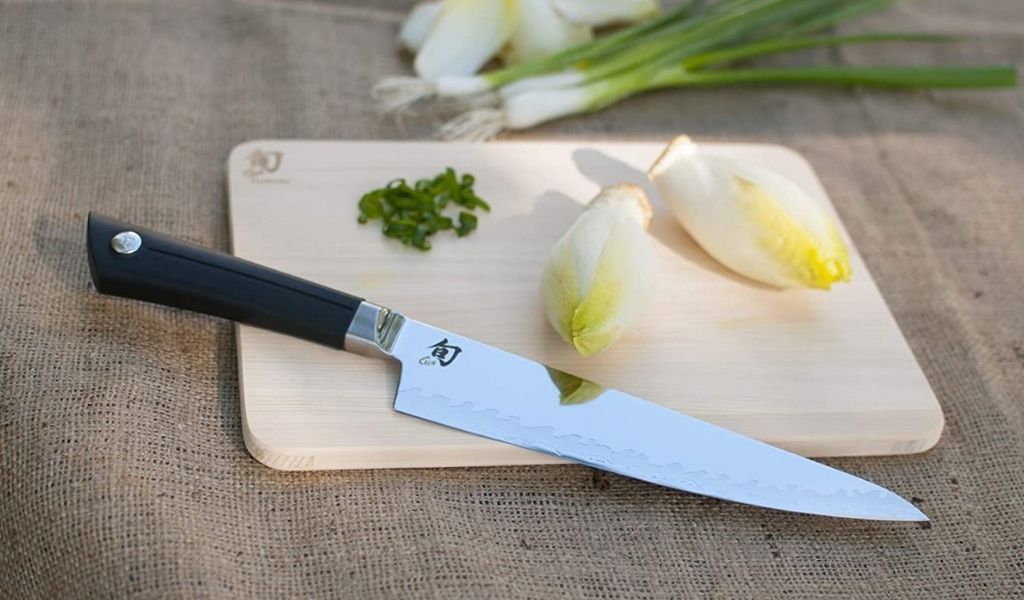
Chef knife is a general term for any knife that has a blade length of 8” or more, which makes it suitable for chopping and slicing. A chef knife usually has a broad blade with a curved edge to allow rocking motions. That makess it easier to cut through vegetables. Though all chef knives have similar characteristics, they are not all made equal.
History of Kiritsuke and Chef Knife
Kiritsuke Knife
A new version of the Japanese kitchen knife, Kiritsuke is originated in the mid-17th century. It was created by a samurai swordsmith, Yasutsugu Nakamura. He named this style after his old post as kiri-tsuke which means “to cut into pieces.”
However,The original Kiritsuke design has been changed a lot through history based on the users’ feedback and preferences over time.
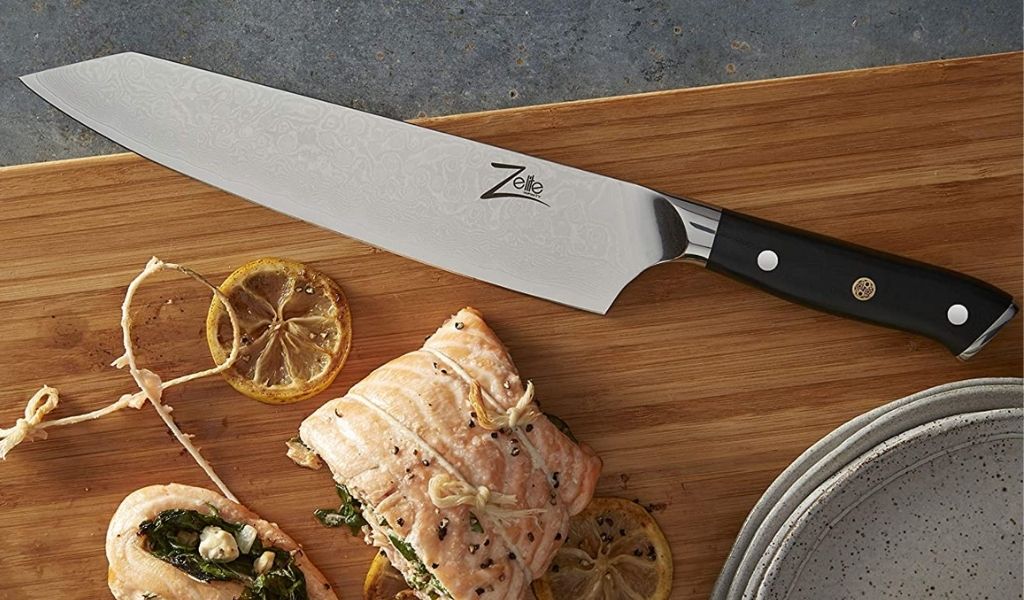
Another similar history says, Kiritsuke knives were originally designed to prepare food for the Japanese tea ceremony, which has been practiced for several hundred years. The first Kiritsuke was designed by an unknown blacksmith in 1603. The knife was created specifically with the purpose of cutting boneless fish and meat. One of its distinct features is that it has a long blade that curves upward to allow the user to cut.
Related Article: Shun premier Kiritsuke Review
Chef Knife
The history of the Chef Knife is a little unclear. It seems like there are three different stories all tied up together. The first story is that the Chef Knife, or Gyuto as it’s known in Japan, came from China.
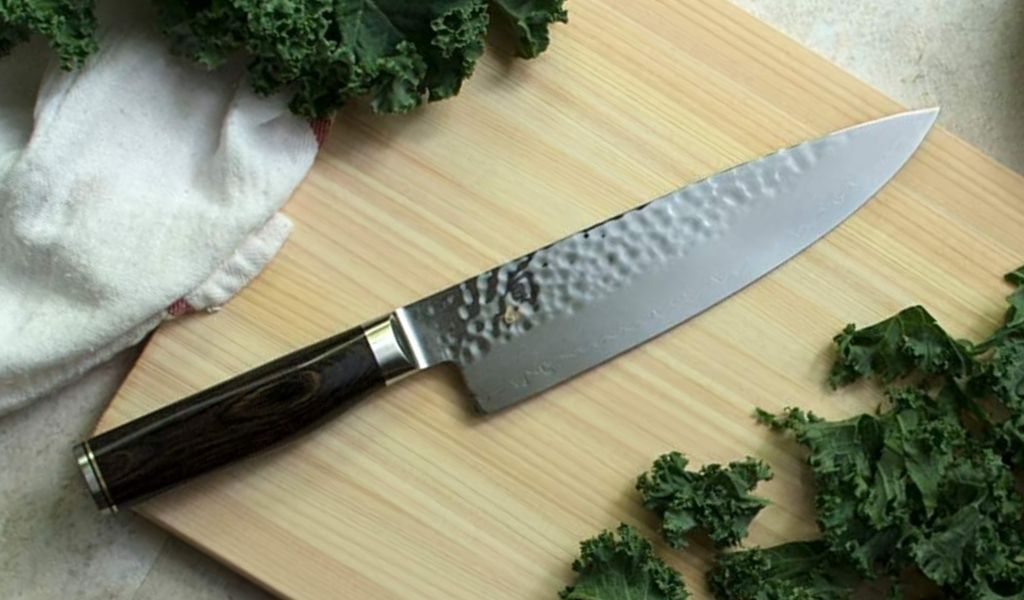
The second story is that it originated in Japan, and the third story is that the French created it. It seems like the most likely time period for its conception was around 1820, which would make sense since most people credit either French or Japanese culture with creating it.
Kiritsuke vs Chef knife: Different Features
You have already got briefly idea about kiritsuke and chef’s knife from this Kiritsuke knife vs chef knife, now let’s go throught their differences.
Design and Pattern
The kiritsuke is the Japanese version of a chef’s knife. It has an angled tip instead of a pointed one. It also has more of an indent in the blade on the back. The rest of the structures and features are pretty much similar from length to heaviness and durability.
Each knife comes with a handle and blade. The kiritsukes have full tang blades while the regular chef’s knife sometimes is half tang or less. As a result, kiritsukes are stronger knives than chefs’ knives. And since kiritsukes are Japanese products, they can be furnished with beautiful Damascus patterns.
A chef is either single beveled or double beveled. A kiritsuke knife is usually single beveled from the side, though there are some that are double beveled from both sides. Besides these features, the tip of the blade makes a huge difference in both knives.
Blade Curve
A Kiritsuke knife has a straight blade with an edge that is dull. This makes it suitable for slicing fish. making it suited for cutting vegetables.
Kiritsuke is a Japanese kitchen knife with a straight blade and dull edge. It is used to slice fish. On the other hand, a western chef’s knife has a curved blade and a sharp edge, it is appropriate for controlled cutting.And as mentioned earlier in this Kiritsuke knife vs chef knife, the blades of these knives differ in that Kiritsuke has an arched blade and a chef knife has minimal arching, allowing for more efficient chopping.
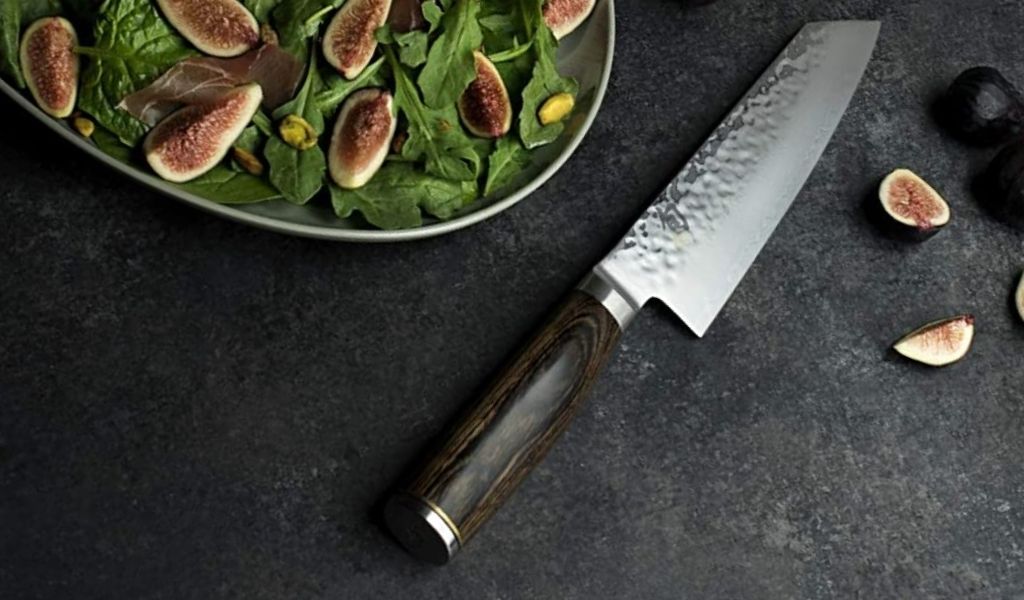
Blade Length
A kiritsuke is a Japanese-style chef’s knife with a long blade. The length of the blade can be between 8 and 12 inches, which is longer than the average 6 to 12-inch chef’s knife. Many people think that this shorter size may be problematic while working but it is not the case. Chef’s knives can help you in this regard.
From the smallest to bigger cubes, chef’s knives are always there to save the day. If you start working with a small knife, you can definitely work your way higher.
Durability and Tolerance
A chef’s knife is more resistant than a kiritsuke. It can be understood better from the functional point of view of the knives. The kiritsuke is a delicate knife that is made to go through fine chopping and slicing.
Moreover, a chef knife is sturdily built to go through all types of force. From chopping soft vegetables to hard turkey, these knives can take it all in. As mentioned before in this shun kiritsuke vs chef knife article The length and the curvature of the chef knives also add some sparkle to them.
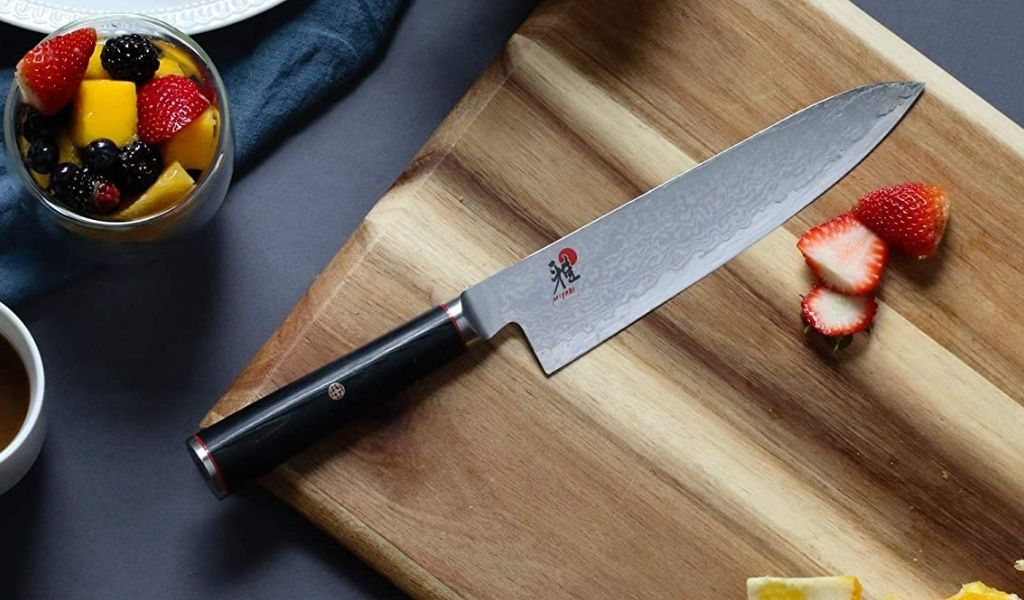
Maneuverability
Kiritsukes have shorter blades and are lighter than chef knives. This makes them more maneuverable. Japan is known for its ninjas, who are quick. This characteristic is reflected in their products as well, such as kiritsuke, which can be used in a fraction of a second.
Clean and Maintenance
The high-quality material for Japanese knives is a disadvantage in this category. The stainless steel knife is easier to clean, easier to sharpen. Moreover, these knives are less prone to chipping, and incredibly hard-wearing by comparison.
On the other hand, Japanese steel knives need more care and maintenance. Japanese steel knives like kiritsuke are only handwash safe and as mentioned already in this Kiritsuke knife vs chef knife review,you need to dry after every wash and store safely.
Weight
Kiritsuke knives are significantly lighter than their chef knife counterparts. The lightweight of these knives make them ideal for chefs with hand or wrist pain. Kiritsuke knives typically weigh between five to seven ounces. This is a stark contrast to traditional chef knives, which usually weigh between seven to nine ounces.
Related Post : Best Coolina Knives Review
Main Use of Kiritsuke and Chef Knife
Kiritsuke Knife
Kiritsuke is a type of knife and is used in a wide range of Japanese cooking. It is a versatile knife that is used to cut meat and fish and can be used as a vegetable knife.
It is used for cutting and slicing various ingredients. And it has various uses, depending on its length. The first thing to consider is the length of your kiritsuke knife. In Japanese kitchens, there are two types of kiritsuke: the 6-inch knife and the 9-inch knife. The 6-inch knife is used mostly for cutting small ingredients such as scallions, garlic, ginger, and bonito flakes. While the 9-inches is more suitable for slicing ingredients such as mochi and daik.
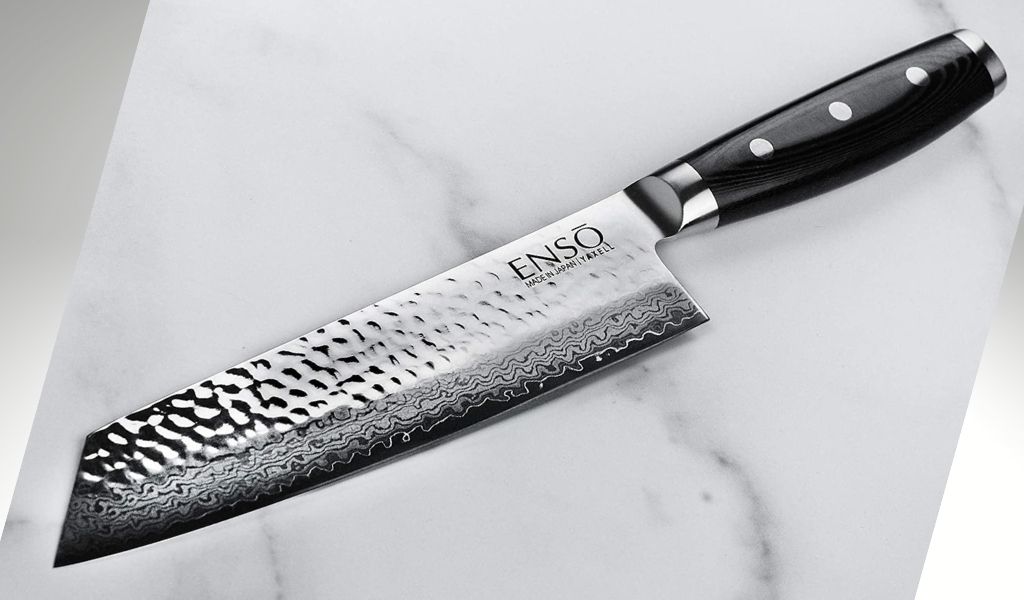
Kiritsuke was originally used for cutting fish and meat, but nowadays it’s also used to cut vegetables. In addition, it’s widely used in the art of sushi preparation as mentioned again and again in this Kiritsuke knife vs chef knife review. The design of this type of knife actually resembles a butcher’s cleaver, which is larger and heavier than most kitchen knives. This is because Kiritsuke knives are used not just to cut, but to hack through the bones of fish and meat that’s cooked.
Chef Knife
A chef’s knife is also a very versatile knife and one of the most important parts of a kitchen. It can do a wide range of tasks from slicing, dicing, chopping, and mincing.
Chef knives are used for various purposes in the kitchen as they are very versatile in nature. They have different uses and here we will discuss them one by one. As it is a multipurpose knife, you can use the chef knife to cut the fruits or vegetables.
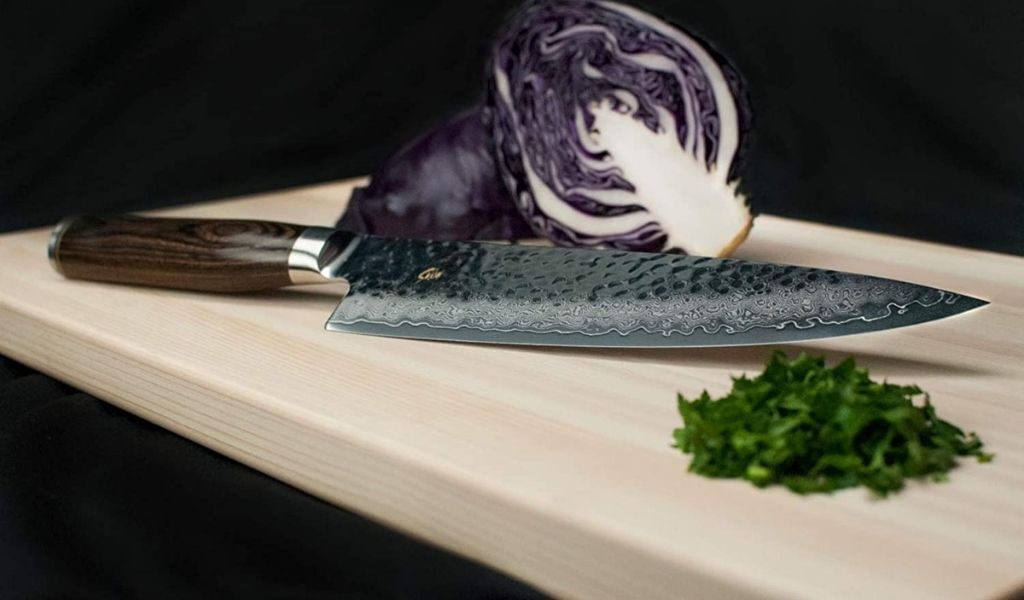
In this case, you have to sharpen the tip of the blade so that it can easily cut the fruits or veggies. If you want to chop the meat then you can use the side part of the blade which will be more effective than using a cleaver knife for this task.
How to use Kiritsuke and Chef knife?
Chef Knife
The key to using it well is to know how to hold and control it properly. The first step to using a chef knife is selecting one that feels comfortable in your hand. If you hold it loosely and comfortably, you will be able to control the blade more easily and make safer cuts. Use a light grip on the handle, with your thumb against the side of the blade.
Kiritsuke Knife
Here are a few ways to hold your Japanese kiritsuke knife. You can use the pinch grip a pen grip or a full pinch grip with your fingers wrapped around the handle. You can also use a standard grip with your knife. I recommend you to try all these grips to see which one works for you.
FAQ
1.What is the best kiritsuke knife?
Shun Dual core kiritsuke is one the best japanese kiritsuke knife. With quality core material, beautiful design this is a perfect kirtsuke knife. Shun premier kiritsuke is also a high end kiritsuke knife. Other kiritsuke brands are miyabi knife, dalstrong etc.
2. What is the best Chef knife?
If you want a chef’s knife in a affordable price and with quality features then wusthof classic chef knife is a great option. There are other high end chef’s knife brand like shun, miyabi, kamikoto and Global.
Which one is better for you?
A Kiritsuke is a Japanese term meaning “to cut away” or “to trim away”. It has a long blade with a sharp point which makes it perfect for cutting through joints of meat or poultry. It can be used for slicing, dicing, mincing, and other cutting tasks. So, if you want these qualities you can go with a kiritsuke knife.
Whereas chef knife is an all-purpose knife because it can be used to chop vegetables, slice meat, and even carve roasts. The chef knife is also known as the Western-style kitchen knife. So, if you want these features in your knife then a chef knife will be a better option.
Conclusion
You must have got a clear idea about kiritsuke and chef knife from this whole Kiritsuke knife vs chef knife comparison. both chef knives and kiritsuke knives have their own pros and cons. Chef knife is ideal for chopping, dicing and kriitsuke is the master in cutting fish, meat with other cuttings. Now It is up to you which one is better for your needs.
Other Comparisons:
